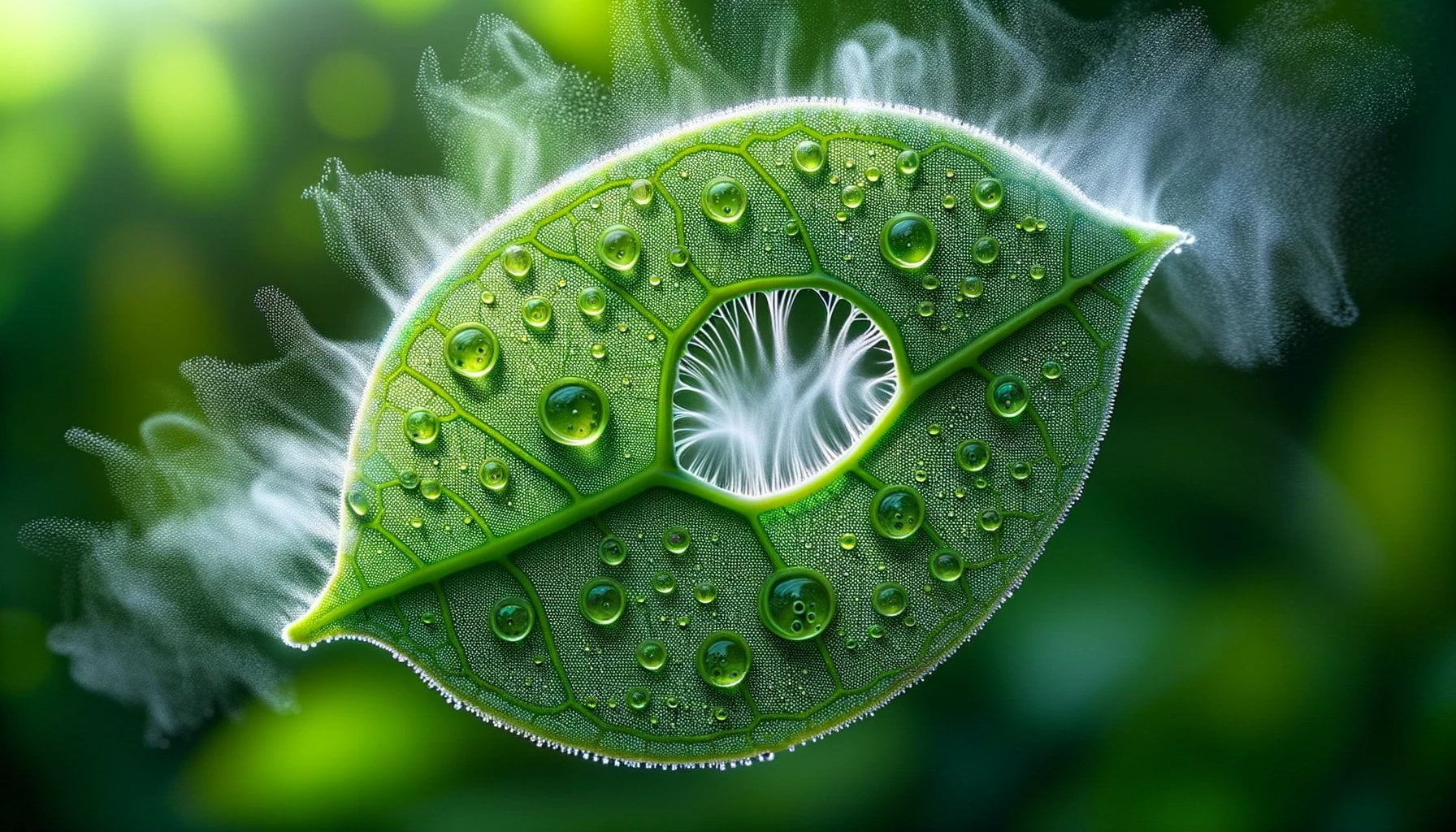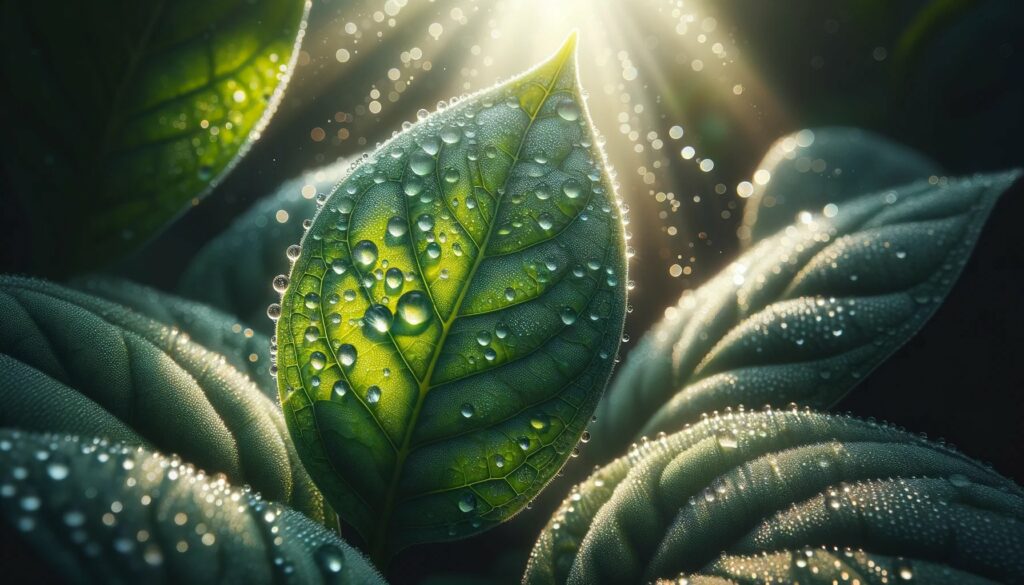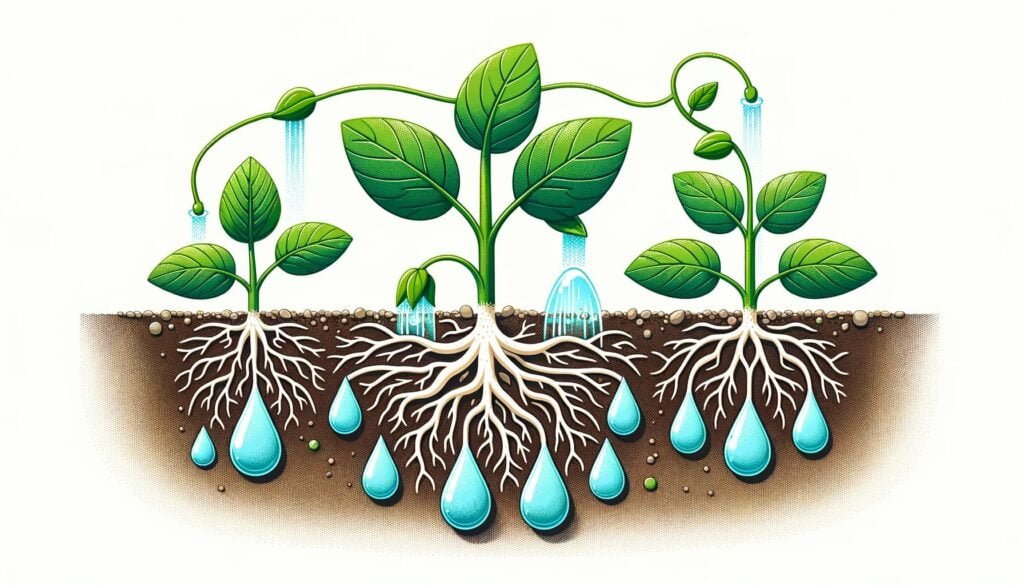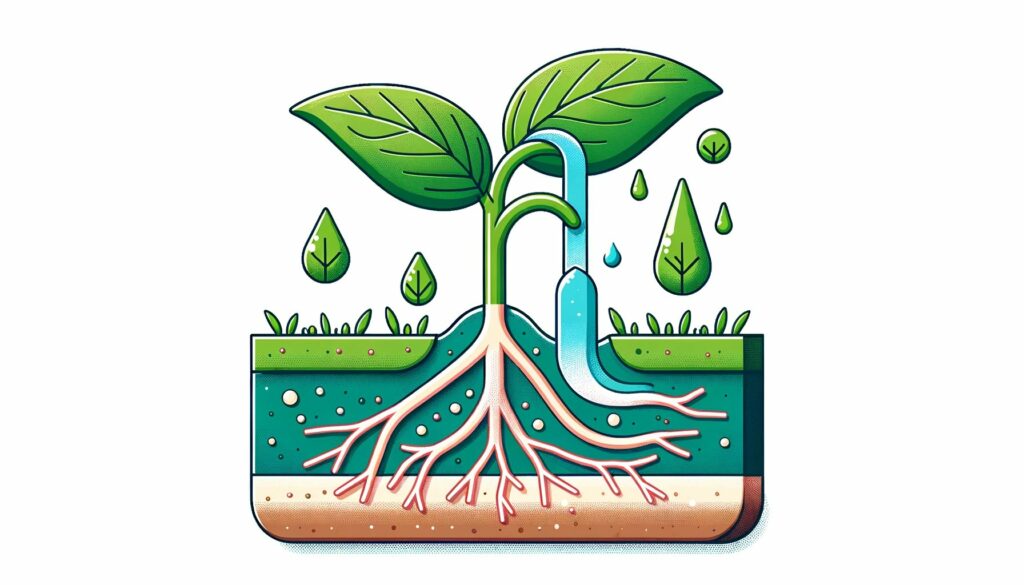As we marvel at the lush greenery of a thriving garden or the majestic height of a towering tree, we may overlook one vital process that sustains their beauty and vitality – transpiration. It is through this remarkable mechanism that plants release water into the atmosphere, providing them with the necessary nutrients and support for growth. Transpiration not only affects the health of individual plants but also plays a significant role in our planet’s water cycle. In this article, we will delve into the intricacies of transpiration, exploring the fascinating ways in which water is released by plants and the implications it has for our understanding of water conservation.
Is water released in transpiration?
The process of transpiration is a fascinating mechanism through which plants release water into the atmosphere. It plays a vital role in the overall health and survival of plants, as well as influencing the moisture levels in our environment. So, let’s delve into the intricacies of transpiration and understand how water is released by plants.
What is Transpiration?
Transpiration is the process by which water is released from the leaves of plants into the atmosphere. Just like we sweat to cool down, plants transpire to regulate their temperature and maintain moisture conditions. This crucial mechanism not only helps to cool plants but also aids in the uptake of nutrients from the ground.
How Does Water Leave the Plant?
Water moves through plant tissues, from the roots to the leaves, serving essential metabolic and physiological functions along the way. Once this water reaches the leaves, it is converted into water vapor, which is then released through tiny openings called stomata. These stomata function like microscopic valves, allowing water vapor to escape while regulating the exchange of gases with the atmosphere.
Why is Transpiration Important?
Transpiration serves multiple purposes in the plant kingdom. Firstly, it aids in the absorption of nutrients from the soil by creating a pull on the water column within the plant. This pull, known as transpiration pull, helps to transport essential substances to different parts of the plant, ensuring its healthy growth and development.
Secondly, transpiration helps to cool down plants. Just like evaporating sweat cools our bodies, the evaporation of water from plant leaves helps to dissipate excess heat and maintain optimum temperatures within the plant. In this way, transpiration plays a crucial role in preventing overheating and ensuring the plant’s survival.
Lastly, transpiration also influences the moisture conditions in our environment. As water vapor is released from plants, it increases the humidity in the surrounding area. This can have significant implications for regional weather patterns, affecting precipitation levels and overall climate.
Factors Affecting Transpiration
Several factors can influence the rate of transpiration in plants. Groundwater availability, water table depth, and environmental conditions such as temperature, humidity, and wind speed all play a role in determining how much water is released through transpiration. Furthermore, different types of plants transpire water at different rates, reflecting their unique characteristics and adaptations to their environment.
The Passive Nature of Transpiration
Unlike many physiological processes, transpiration does not require the direct energy input of ATP. Instead, it is a passive process driven by the difference in water potential between the soil and the atmosphere. This means that water moves through plants from areas of high water potential (soil) to areas of low water potential (atmosphere) without the need for the plant to actively expend energy.
The Balance of Water Absorption and Transpiration
It is important to note that only a small percentage of the water absorbed by roots is used for growth or metabolism. The majority of the water that enters the plant is excess water, which is released through transpiration. This balance between water absorption and transpiration ensures that plants can fulfill their physiological needs while avoiding waterlogging and maintaining proper moisture levels.
In conclusion, transpiration is a continuous process through which plants release water into the atmosphere. It helps to regulate temperature, aids in nutrient absorption, and influences moisture conditions in the environment. By understanding the mechanisms and significance of transpiration, we can appreciate the intricate relationship between plants and water, empowering us to make informed decisions about water usage in an increasingly water-scarce world. So, the next time you marvel at a blooming flower or a majestic tree, remember the hidden wonders happening within their leaves as water is released through the process of transpiration.
Transpiration is a vital process in the water cycle. It plays a significant role in the movement of water through plants and the environment. Understanding the concept of transpiration in the water cycle is crucial for comprehending how water is transported from the roots of plants to the atmosphere. To delve deeper into the intriguing world of transpiration and its relation to the water cycle, click here. This link will take you on a fascinating journey where you will discover the secrets behind this natural phenomenon. So, prepare to be amazed as you unravel the mysteries of transpiration and its integral role in the water cycle.
Factors Affecting Transpiration Rate
Transpiration is a fascinating process that plays a crucial role in the survival and functioning of plants. It involves the release of water vapor from the leaves into the atmosphere through small openings called stomata. But what are the factors that affect the rate at which this transpiration occurs? Let’s dive into the key elements that influence transpiration rate.
Temperature:
Temperature has a significant impact on the rate of transpiration. As the temperature rises, so does the transpiration rate. This is because higher temperatures increase the evaporation of water from the leaves. On the other hand, lower temperatures result in reduced transpiration rates.
Wind:
Wind plays a crucial role in transpiration. When there is a breeze or wind, it enhances the evaporation of water from the leaf surface, leading to higher transpiration rates. The movement of air around the plant removes the water vapor, creating a drier environment around the leaves.
Humidity:
Humidity levels can greatly influence the rate of transpiration. In areas with low humidity, plants tend to conserve water by reducing the surface area of their leaves and developing thicker cuticles. This adaptive response helps minimize water loss through transpiration.
Light:
Light intensity also affects transpiration rate. When plants are exposed to light, it stimulates the opening of stomata, allowing water vapor to escape more easily from the leaves. As a result, transpiration increases with higher light intensity.
It’s important to note that transpiration serves two key functions for plants. Firstly, it provides the force necessary to lift water up from the roots to the leaves, ensuring that essential nutrients are delivered throughout the plant. Secondly, transpiration helps to cool the leaves, preventing them from overheating under intense sunlight.
The Source of Water: Soil Moisture
The main source of water for transpiration is the moisture in the soil. Water is absorbed by the plant’s roots and transported through the vascular system to the leaves. From there, it is converted into water vapor and released through transpiration.
The Role of Transpiration: Water Loss and Photosynthesis
It may surprise you to learn that only a small fraction of the water absorbed by the roots is actually used in photosynthesis or plant growth. The majority of the water is lost through transpiration. Less than 1% of the water that reaches the leaves is used for essential metabolic processes, while the remainder is released into the atmosphere.
Understanding the factors that affect transpiration rate is crucial for better water management, especially in areas where water scarcity is a concern. By comprehending how temperature, wind, humidity, and light influence transpiration, we can make informed decisions about irrigation, crop selection, and plant care.
To summarize, environmental factors such as temperature, wind, humidity, and light intensity directly impact the rate of transpiration. By considering these factors and implementing appropriate water conservation practices, we can ensure the sustainable use of our precious water resources in our increasingly water-scarce world.
So, the next time you encounter a plant releasing water vapor, remember the intricate relationship between that plant and the surrounding environment. Nature has its way of maintaining balance, and understanding transpiration helps us navigate that delicate equilibrium.
Now, armed with knowledge about the factors affecting transpiration rate, let’s make informed choices in managing water wisely.
Importance of Transpiration for Plants
Transpiration is a crucial process for plants, playing a vital role in their overall health and survival. As an experienced horticulturist, I want to emphasize the significance of transpiration for plants and its implications for water management in our increasingly water-scarce world. In this article, we will delve into the importance of transpiration and explore how it affects plants in various ways.
Maintaining Water Balance
One of the primary reasons why transpiration is important for plants is its role in maintaining their water balance. Through transpiration, plants lose water from their leaves, which helps to regulate the distribution of water within their bodies. This loss of water is essential in preventing an imbalance that could lead to wilting and dehydration. By releasing water vapor through their stomata, plants ensure that the water absorbed by their roots is distributed evenly throughout their tissues.
Heat Regulation and Cooling System
Transpiration not only helps with water balance but also acts as a cooling system for plants. As water is released through their leaves, it evaporates, creating a cooling effect. Just like sweating keeps us cool on a hot day, transpiration helps plants regulate their temperature. This is particularly important during scorching summer months when excessive heat can be detrimental to plant health. Transpiration serves as a natural cooling mechanism, preventing plants from overheating and sustaining damage.
Nutrient Transport and Photosynthesis
Transpiration plays a crucial role in the transportation of minerals and nutrients within plants. As water is absorbed by the roots and transported through the xylem, it carries essential minerals along with it. This mechanism ensures that vital nutrients reach all parts of the plant, promoting healthy growth and development. Furthermore, transpiration provides water for the process of photosynthesis, which is vital for a plant’s energy production and overall vitality.
Cell Turgidity and Osmosis
Maintaining cell turgidity, or firmness, is another critical function of transpiration. By releasing water, plants help their cells maintain their proper shape and turgor pressure, which is necessary for their structural integrity and efficient functioning. Transpiration also aids in maintaining the process of osmosis, ensuring cells remain rigid and capable of performing their essential functions.
Gas Exchange and Plant Respiration
Transpiration is closely linked to gas exchange in plants. Through stomata, which are microscopic openings on the surface of leaves, plants take in carbon dioxide needed for photosynthesis while releasing oxygen. This exchange of gases is crucial for plant respiration, enabling them to utilize oxygen and produce energy. Transpiration helps facilitate this gas exchange process, ensuring a constant supply of fresh air for plant respiration.
Development and Growth
The absorption and distribution of water in plants, made possible by transpiration, play a vital role in their overall development and growth. From seed germination to the formation of new shoots and leaves, water is essential at every stage. Transpiration allows for the efficient absorption and transportation of water, enabling plants to grow and thrive.
In summary, transpiration is of utmost importance to plants. It helps maintain water balance, facilitates cooling and heat regulation, aids in nutrient transport and photosynthesis, supports cell turgidity and osmosis, enables gas exchange and plant respiration, and contributes to overall development and growth. Understanding the significance of transpiration not only provides valuable insights into plant physiology but also empowers us to make informed decisions about water usage and conservation in our increasingly water-scarce world.
FAQ
Question 1: What is transpiration?
Answer 1: Transpiration is the process by which water is released from the leaves of plants into the atmosphere. It occurs when water in the leaves is converted into water vapor, which is then released through tiny openings called stomata.
Question 2: What is the purpose of transpiration?
Answer 2: Transpiration serves several important functions for plants. It helps to release excess water from plants, maintain moisture conditions in the environment, cool plants, and maintain heat balance in the plant body. Additionally, transpiration helps in the transportation of absorbed minerals to all parts of the plant and provides water for the process of photosynthesis.
Question 3: What factors affect the rate of transpiration?
Answer 3: The rate of transpiration is influenced by several factors. Temperature plays a significant role, as higher temperatures increase the rate of transpiration. Wind also increases evaporation rates and leads to more water loss through transpiration. Humidity, on the other hand, reduces transpiration rate. Light intensity stimulates stomatal opening, allowing water vapor to easily leave the leaf and increase transpiration rate.
Question 4: What is the main source of water for transpiration?
Answer 4: The main source of water for transpiration is soil moisture. Water absorbed by the plant roots is transported to the leaves and then released through transpiration.
Question 5: Why is transpiration important for plants?
Answer 5: Transpiration is important for plants because it helps keep the water balance in the plant body, gets rid of excess water absorbed by roots, maintains heat balance, facilitates the transportation of minerals, provides water for photosynthesis, helps cells maintain their turgidity, maintains osmosis, aids in gas exchange, and assists in the development and distribution of water in plants.
- Crypto Quotes’ Red Flags: Avoid Costly Mistakes - June 30, 2025
- Unlock Inspirational Crypto Quotes: Future Predictions - June 30, 2025
- Famous Bitcoin Quotes: A Deep Dive into Crypto’s History - June 30, 2025



















